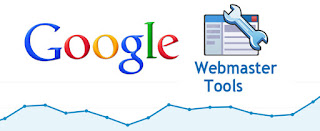Google Webmaster tool are essential for any strong SEO effort, it is called as mock pointer. Generally controlled form tools like search console which can sees your site, such as external and internal links to your site, adjust the crawl site at which google bot indexes your site, check the keywords users typed to hand on your site. you can see and check it out country settings, sitemap, crawl errors, bad links, proper links, keywords. Google webmaster tool can add a property website or blog after that verify the html tags. search console verification will allow the webmaster dashboard fetch as google and crawl this url by clicking. google indexing for site you can submit url. you find opportunities to address keyword optimization and duplicate content issues.
Search Queries
The Search Queries section shows the keywords that led users to your site. In the search queries section, you can also see the number of impressions and the number of clicks, which gives you an idea about the CTR for this keyword. CTR means click-through rate , is the percentage of people that are clicking on your site in the search results.
Links
The second very useful section of Google Webmaster Tools is the Links to Your Site section. Here you can see where your backlinks (internal and external) come from, as well as the pages they are linking to. As with other link checking tools, don't expect that every link to your site is displayed but nevertheless this list of backlinks is useful to check from time to time. One of the advanced uses of the Links section is to disavow links to your site you deem harmful. Links from bad sites can hurt your rankings.
Crawls Errors
The Crawl Errors section shows the errors Google bot encountered on your site. You also get some other crawl stats (such as the number of pages crawled a day) that are useful to know.
Keywords
Similarly to the Search Queries section that also deals with keywords (but it is the ones users type to get to your site), the Keywords section also shows keywords. The Keywords section also allows to see the theme of your site, which post Panda has become even more important.
SiteMaps
The last section you can access from the Dashboard is the Sitemaps section. Here you see the sitemaps of your site Google has found and the number of URLs in them. If the sitemap found by Google is different from what you expected it to be, you can submit a new sitemap for Google to use.
These are webmaster tools background and i have previously done a blog post about On Page SEO Optimization and History of SEO




